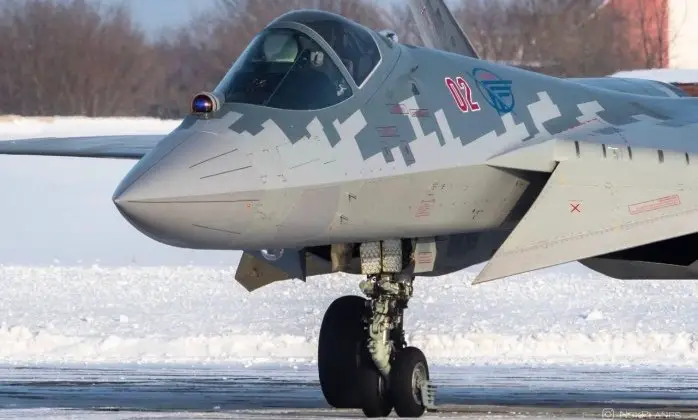<p >An unnamed foreign client has already signed its first contract with Russian state run arms export conglomerate Rosoboronexport to acquire Su-57 fifth generation fighters, fuelling considerable speculation as to which state had made the purchase. Speaking at Airshow China in Zhuhai on November 13, Rosoboronexport CEO Alexander Mikheyev stated regarding the sale: "The system of military-technical cooperation should bring new armaments and military hardware to the market. We have already signed the first contracts for the Su-57.” Mikheyev a day prior commented at the event that the fighter “fully meets all requirements to fifth-generation aircraft. Its major competitive advantage is the real combat engagement experience. The Russian Defense Ministry said it excellently performed in combat. The jet is distinguished by powerful weapons with the latest missiles, as well as a high survivability due to low signature and modern onboard defence.” It was notably not specified when the contract for the sale of Su-57s was signed, raising the possibility that it may have been signed long before the Zhuhai Airshow, and possibly as early as 2020 when Algeria was <a href=" >reported</a> to have placed an order.&nbsp;</p><p ><img src=" title="Su-57 at the 2024 Zhuhai Airshow"></p><p >Commenting on the Su-57’s export prospects, CEO of the state run United Aircraft Corporation Vadim Badekha stated that “a certain queue has formed” for the aircraft, noting that “for a long time, it has attracted legitimate interest from our long-term partners.” The reference to a queue for the fighter highlights that production of the Su-57 on a meaningful has only begun relatively recently, with just <a href=" fighters delivered </a>in 2022, <a href=" in 2023</a>, and according to schedule <a href=" fighters in 2024</a>. While it has been confirmed that the Russian Air Force is scheduled to have received 76 fighters by the end of 2027, it remains uncertain what scale production is intended to have reached by that time, with the rapid rate at which production has been expanded raising a significant possibility that many more than 76 fighters will have been produced by then, with close to two dozen or more being built for export. The<a href=" Aviation Plant</a>&nbsp;in the Russian Far East in August saw&nbsp;<a href=" facilities opened</a>&nbsp;to facilitate expanded production of the Su-57, with leading potential clients reported to have shown an interest in the aircraft including Algeria, India and Vietnam among others.</p><p ><img src=" title="Newly Delivered Su-57 Fighter on November 11"></p><p >The Su-57 has seen a far higher degree of combat testing than any other fighter of its generation, with the aircraft having contributed to the Russian air campaign in the Ukrainian theatre from early 2022. Operations have included&nbsp;<a href=" >air defence suppression</a>,&nbsp;<a href=" >air to air combat</a>, and&nbsp;<a href=" >operations in&nbsp;</a>heavily defended enemy airspace, as well as a range of&nbsp;<a href=" >precision strike missions</a>&nbsp;using&nbsp;<a href=" >both internally and externally</a>&nbsp;deployed missiles. The fighter is one of just four in its generation in production today worldwide, alongside the <a href=" >Chinese J-20</a>&nbsp;and FC-31 and the <a href=" >American F-35</a>. The Su-57’s immediate predecessors the Su-27 and Su-30 were highly successful on global export markets, and were purchased in much greater numbers by foreign clients than by the Russian Defence Ministry itself. The vast majority of Su-27s produced in the 1990s were acquired by China, while the majority of Su-30s produced in the 2000s were acquired by India. The Indian Air Force is expected to be the leading client for the Su-57, and while the country pulled out of a deal for extensive technology transfers and joint ownership of the program, it has continued to show a strong interest in either license production or off the shelf purchases. Discussions on a license production deal were <a href=" target="_blank">reported to be underway</a> in February 2023.</p>
Russia Confirms First Su-57 Export Deal Already Signed: Expanding Production Could Allow Quick Deliveries

